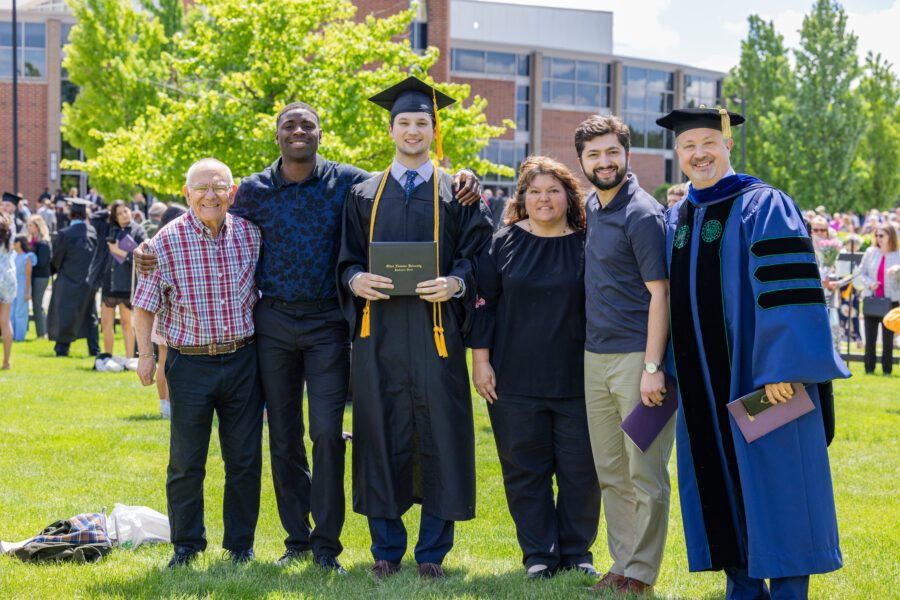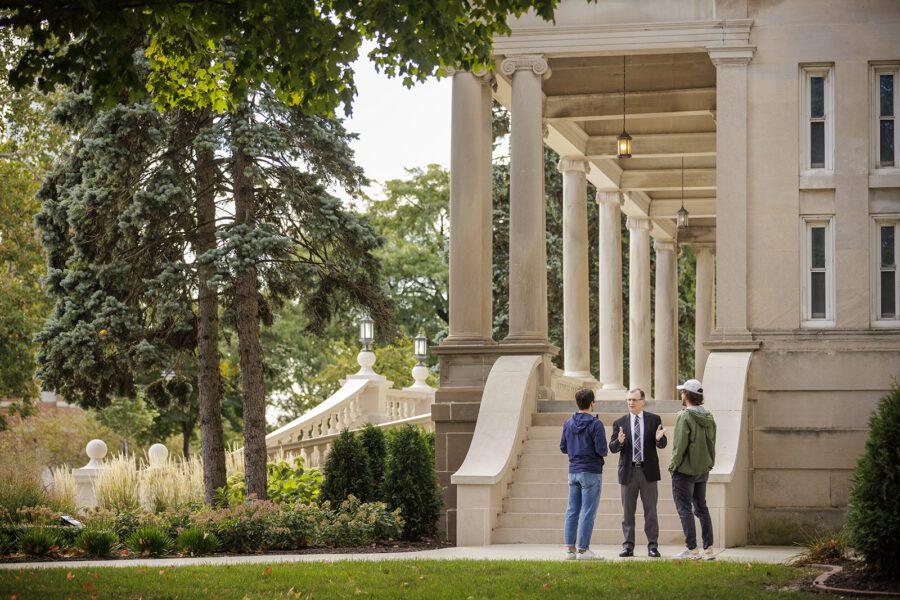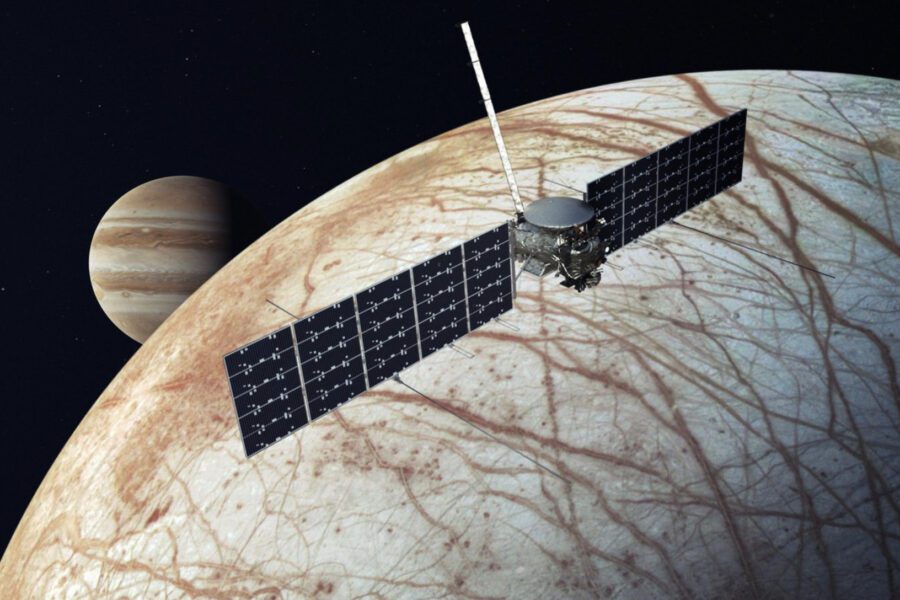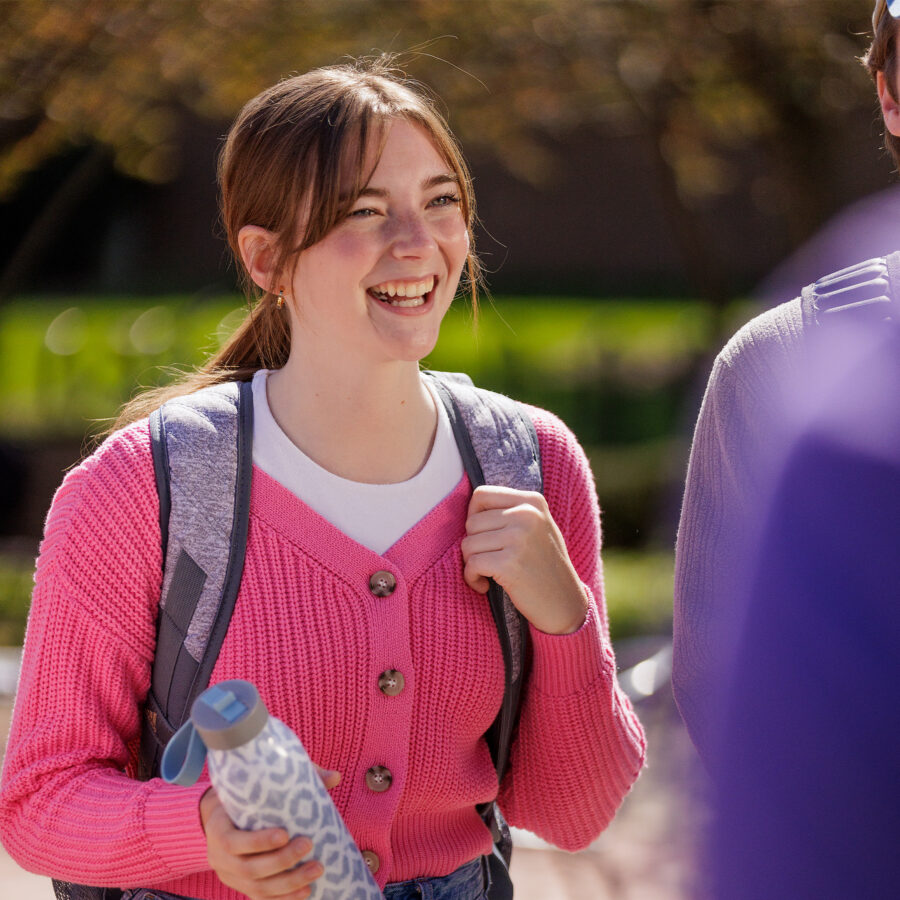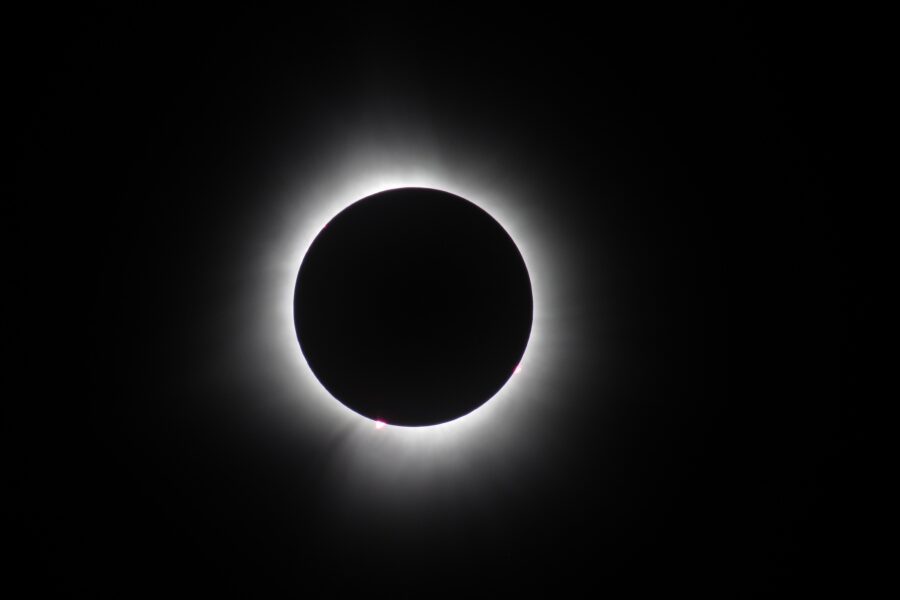

Olivet students and professors had a second chance at a once-in-a-lifetime opportunity in April when the moon’s shadow swept across the United States, causing a total solar eclipse viewed by millions. The path of totality on April 8 stretched from Maine to Texas and was the second total solar eclipse visible from the continental United States in the past decade. Students from the Earth and Space Sciences program, thanks to support from a Samuel Mayhugh research grant, traveled to southern Indiana to view the eclipse and gather data in the hours leading up to totality and during the approximately four minutes of total darkness during the event.
Dr. Charles Carrigan ’96 and Dr. Stephen Case ’05, who together led an expedition to southern Illinois to view the August 2017 total solar eclipse, also led this year’s trip. The 2017 eclipse took place during the summer months and thus limited student participation, but this year’s event offered the chance for nearly thirty students to attend the two-night expedition and witness the event. The group was also accompanied by Prof. Madeline Shepley, who joined the Earth and Space Science program at Olivet this year as professor and director of the Strickler Planetarium.
Students and professors traveled to Nashville, Indiana, and stayed at Camp Rancho Framasa, whose wooded hills provided an ideal viewing location. A clearing beside a large pond allowed an unobstructed view of the sky as well as the opportunity to participate in a NASA citizen science program observing wildlife behavior during the eclipse. Groups of students also monitored the changing ambient temperature and light levels as the moon blocked more and more of the sun’s face as totality approached.
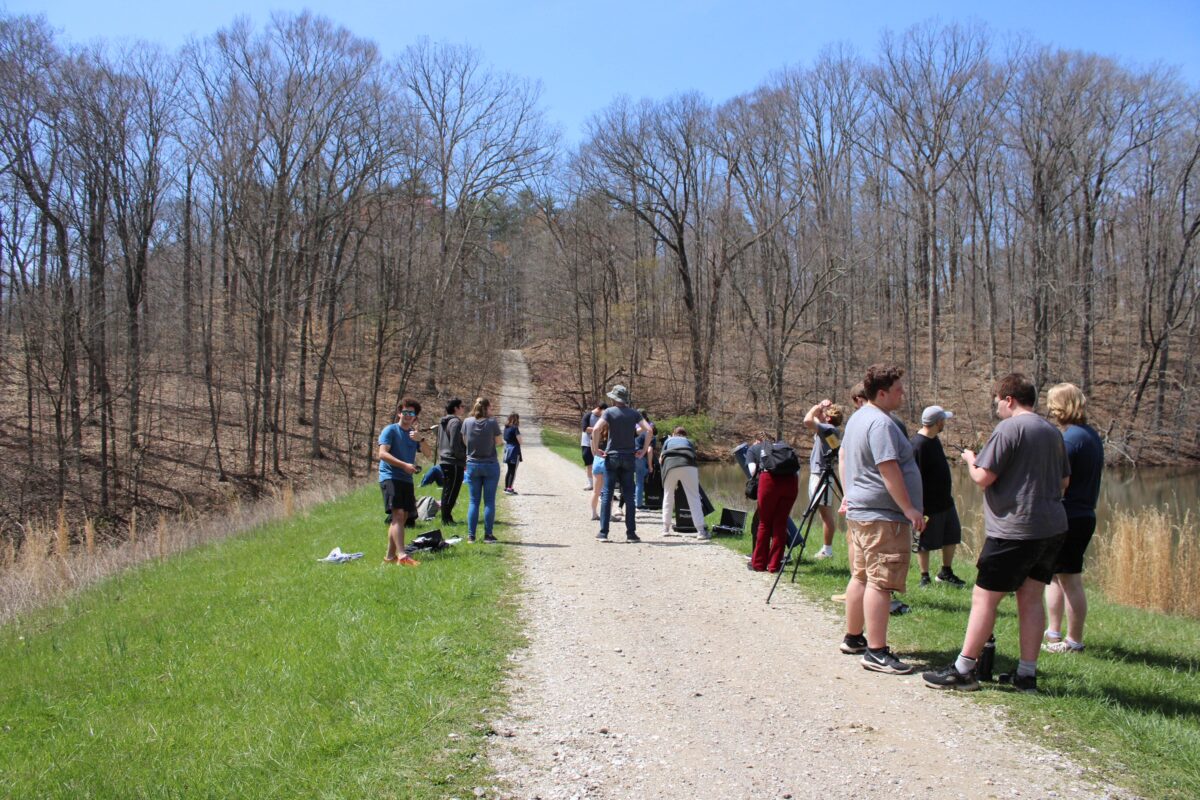

Photography: Kate Peeken
“It felt like I was in a sci-fi movie,” noted Matthew Aude, a junior science education major. “The temperature drop was certainly surreal, and the eclipse itself was breathtaking.”
The weather at the observing site cooperated, remaining perfectly clear for the entire event. When the eclipse reached totality, students were treated to one of nature’s most phenomenal sights. As the moon completely blocked the sun, the solar corona became clearly visible, Jupiter and Venus were spotted in the darkened sky, and there was even a celestial surprise: a ruby-red solar prominence peaking over the moon’s edge. It was an unforgettable experience. When the sun reappeared, animals responded as though it was dawn. Frogs broke out in a loud chorus of croaking from the nearby pond.
“Even just a few minutes without the sun resulted in animals being confused,” noted Amy Johnson, a sophomore environmental science major. “I am so grateful that God has intricately created the universe to sustain life on Earth.”
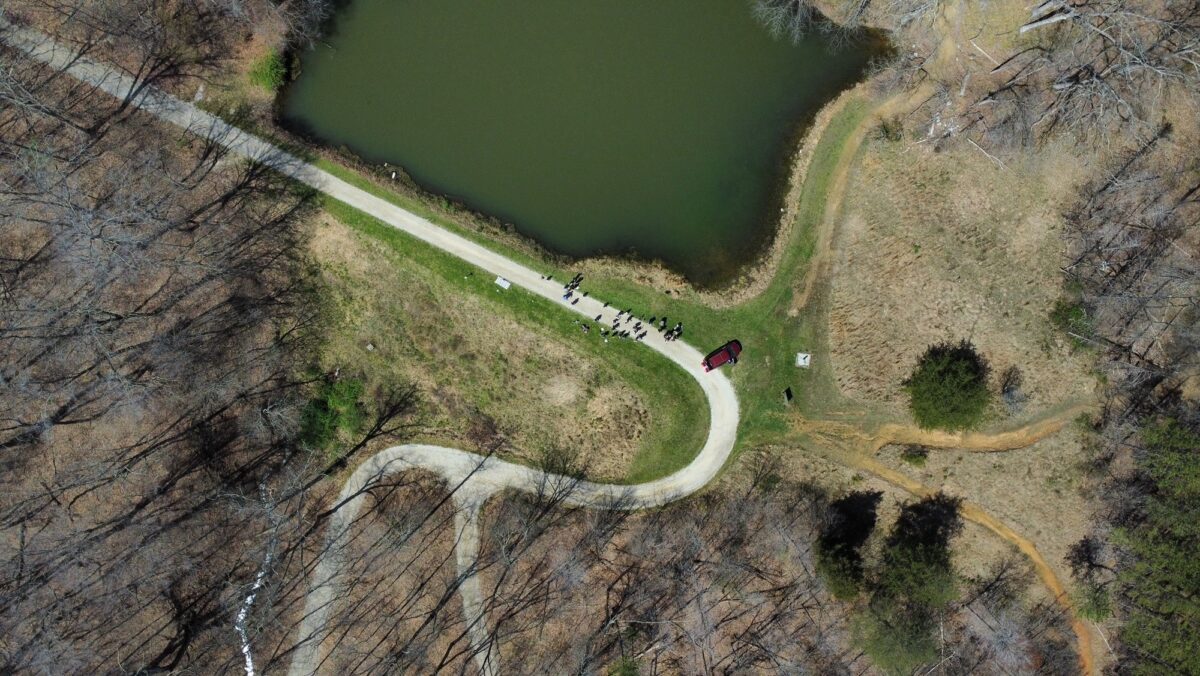

Photography: Matthew Aude
Besides the one-in-a-lifetime celestial event, the trip was an opportunity for students to dialogue on issues of science and faith. The morning before the eclipse, Dr. Carrigan spoke to the group on the nature writings of Henry Thoreau, and students broke into discussion groups with professors. For Johnson, the shared experience was central.
“I found the community aspect to be the most meaningful part of the trip,” she explained. “Being surrounded by fellow excited classmates and intelligent professors who were equally as excited to experience the eclipse definitely raised the anticipation.” After the eclipse the group continued fellowship around a campfire and used telescopes for evening observation of the spring night sky.
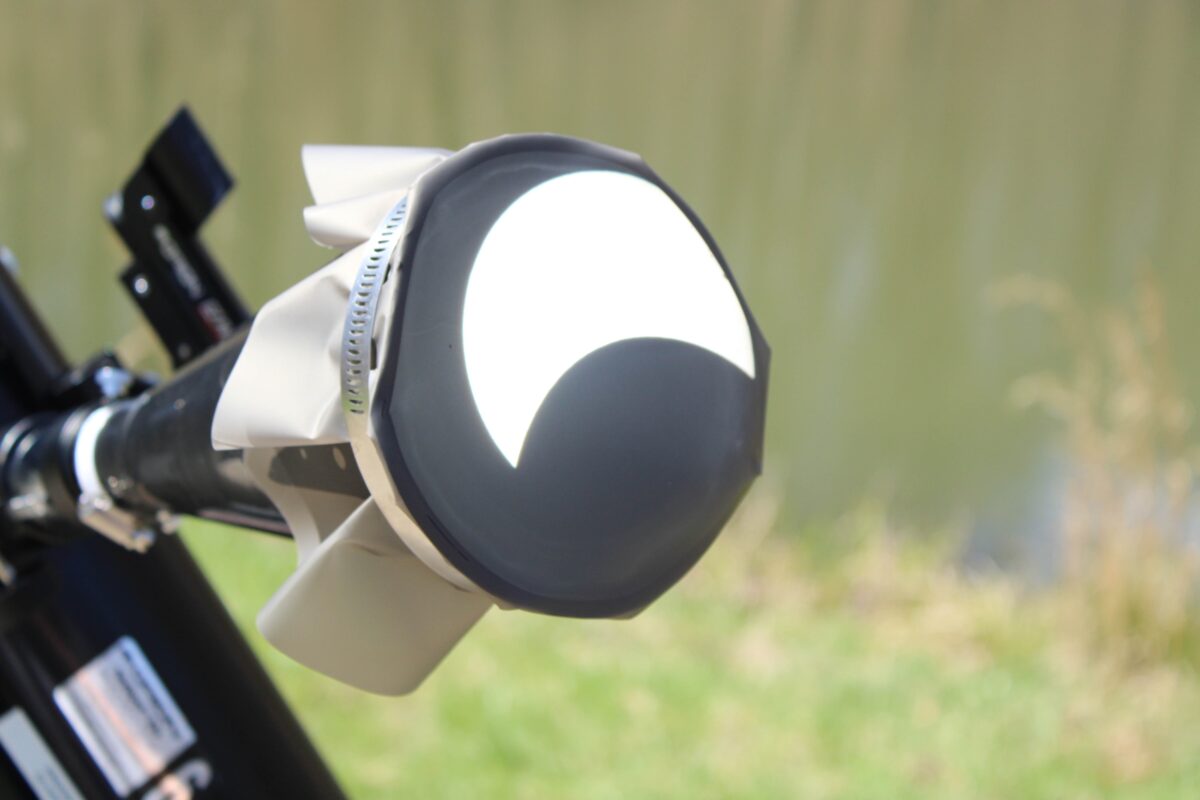

Photography: Kate Peeken
In Bourbonnais, which lay outside the path of totality, the eclipse coverage was around 95%, and students on campus viewed the event using eclipse glasses. The next total solar eclipse in the continental United States will occur in 2044, though totality will only be visible from Montana and the Dakotas. The next path of totality so close to Olivet’s campus won’t be until the year 2099.
For science students like Aude, the eclipse was a meaningful faith experience. “God gave us the minds to grow, learn, and enjoy God’s creation,” he notes, “and we were able to experience something like none other.”
Martin D. Walker School of Science, Technology, Engineering & Mathematics


